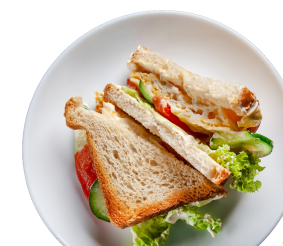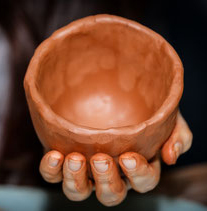Art and Accessibility
Everyone deserves the opportunity to express their creativity, regardless of physical barriers. Your library is here to ensure art is accessible to everyone.
Two months ago, I had a freak accident that left me temporarily unable to use my right hand. I was lucky enough to have support from friends and family to help with things like cooking, cleaning and self care. However, I was desperate to find a creative outlet that was gentle enough on my hand.
I used my experience to explore how other artists maintain their creativity with physical limitations. Happily, I discovered the library has a large array of materials to support artists of all abilities. Let's investigate how our library helps make art more accessible.
Pottery and Clay Works
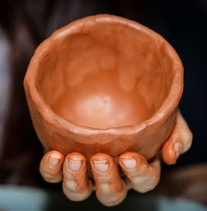
Traditional Clay Pinch Pot
Clay is an excellent medium for people with chronic hand pain and people with visual impairments. When done gently, the kneading, rolling and sculpting motions can be therapeutic to sore and inflamed hands. For people with visual impairments, clay allows the artist to explore different shapes, textures and styles with their hands.
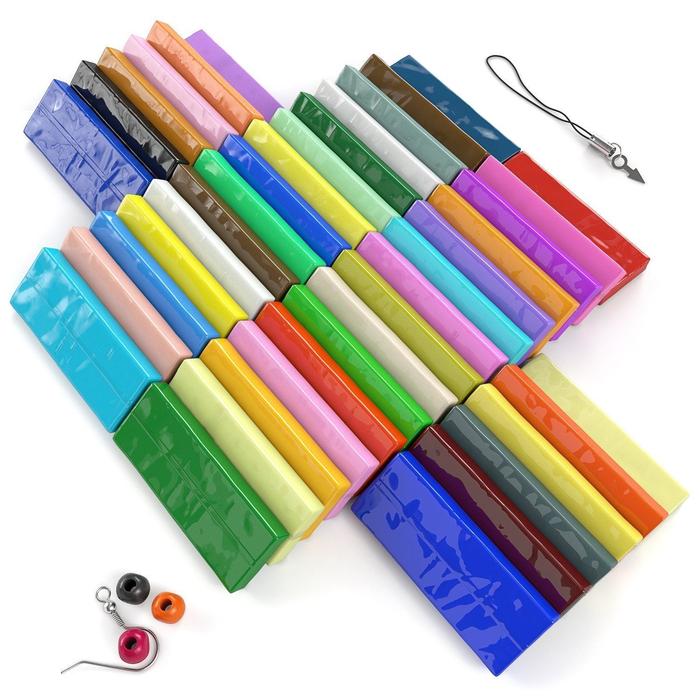
Polymer clay is available in a wide variety of colors
While we generally think of pottery as being created on a wheel and fired in an expensive kiln, the library offers several affordable options. Clay Modeling For Everyone is great for beginners interested in making traditional pieces like pots, sculptures and vessels without a potter's wheel. If you're interested in more contemporary expression, The Art of Polymer Clay teaches the basics of making jewelry and decorative pieces. Polymer clay can be hardened in a traditional kitchen oven.
Knitting and Yarn Work
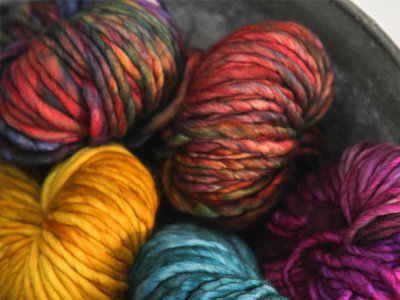 It may seem like yarn work would be hard for people with arthritis, carpal tunnel or chronic hand pain. However, knitting, crocheting and even crewel embroidery can improve manual dexterity and help with pain management. Be sure to use larger needles made from wood or plastic if possible. The repetitive motions of yarn work can offer a welcome distraction from chronic pain.
It may seem like yarn work would be hard for people with arthritis, carpal tunnel or chronic hand pain. However, knitting, crocheting and even crewel embroidery can improve manual dexterity and help with pain management. Be sure to use larger needles made from wood or plastic if possible. The repetitive motions of yarn work can offer a welcome distraction from chronic pain.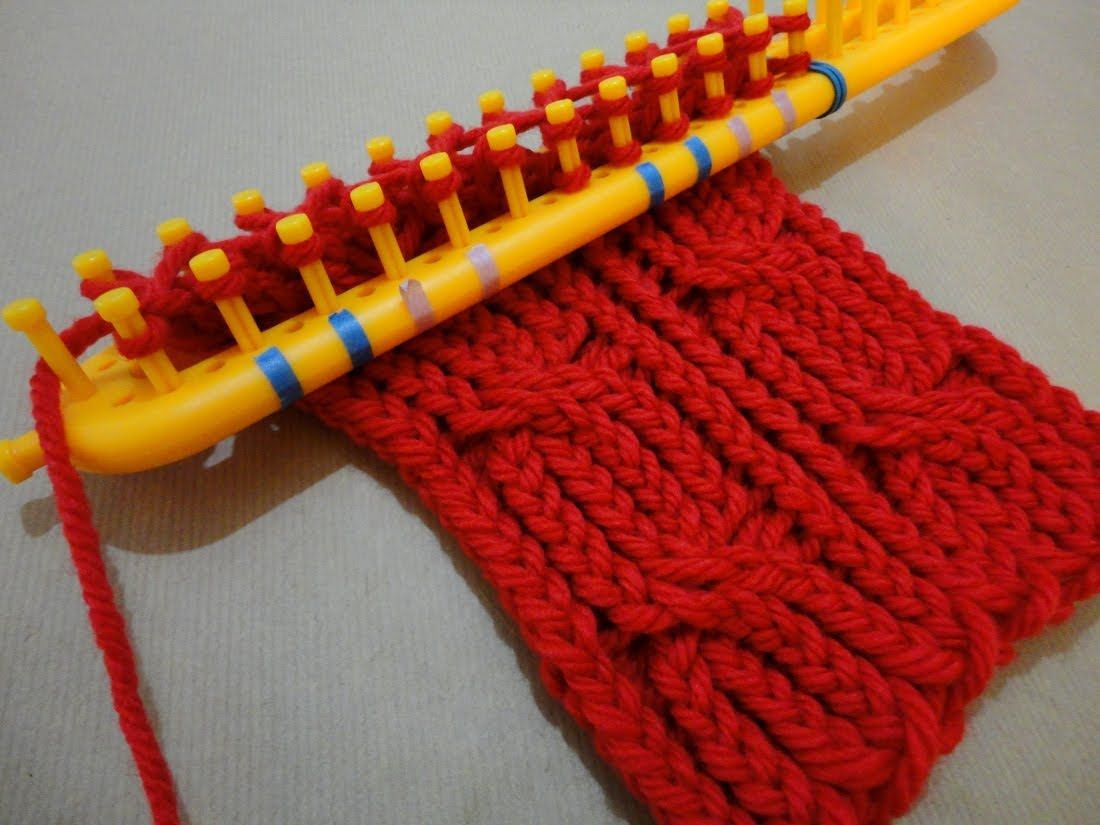
Loom knitting doesn't require needles
I still have reduced feeling in two of my fingers, so working with needles is not an option for me. Loom knitting makes it possible for me to work with yarn in spite of my limited fine motor skills. If you're new to knitting, Knitting for the Absolute Beginner features timeless designs and easy step-by-step instructions. Loom Knitting Primer is a perfect book if you're more comfortable working with a small hand loom than with needles. Yarn is one of our most popular craft mediums at the library. Once you've mastered the beginning stages of knitting, you'll find more than 600 digital and physical resources available to help you enjoy this craft.
3D Printing

3D printer at work
Did you know your library has a 3D printer? For just $5, you can create just about anything your heart desires in our Make-It-Lab. Recently, art museums have been taking advantage of similar software to create 3D replicas of classical art pieces. This is a great way for people with limited mobility to get up close and personal with famous works of art from the comfort of their own home (or library). For people with visual impairments, a 3D rendering of a famous painting gives them the opportunity to experience the art using touch rather than sight. If you're more interested in the process of designing 3D art, 3D Printing for Dummies can teach you everything you need to know to design, manipulate and print a completely new and unique piece.
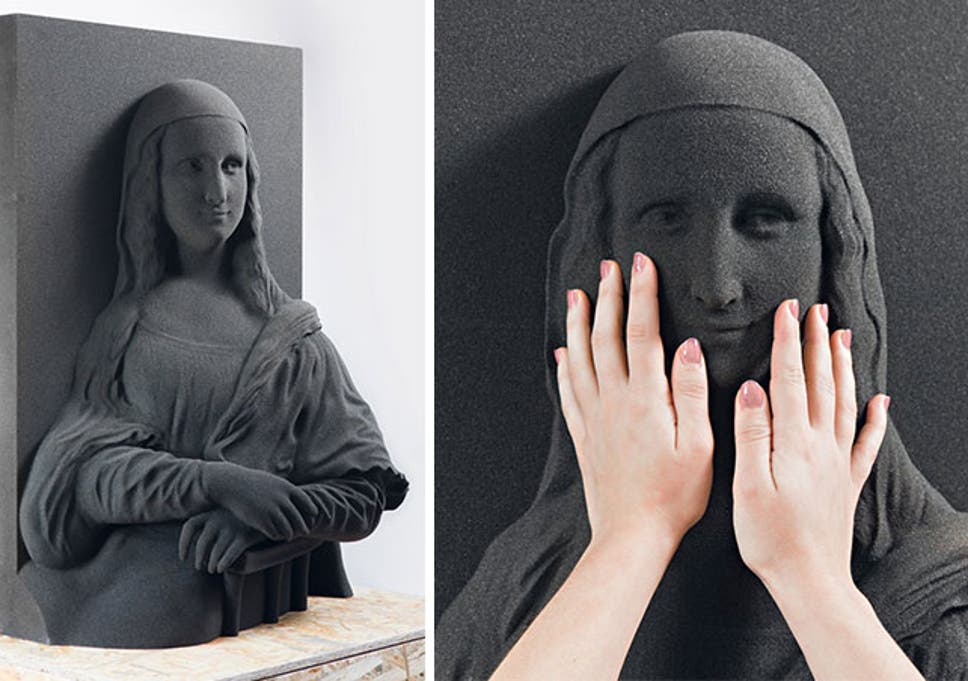
3D printed Mona Lisa
The library is here to make life easier for YOU. If you live with a disability that makes creating, accessing and enjoying art difficult, we want to know how we can help. Comment on this post, give us a call, send us an email or stop by to chat about what we're doing right and what we can do better.







